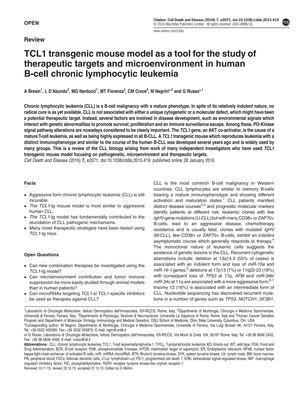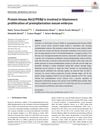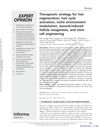TCL1 Transgenic Mouse Model as a Tool for the Study of Therapeutic Targets and Microenvironment in Human B-Cell Chronic Lymphocytic Leukemia
January 2016
in “
Cell Death and Disease
”

TLDR The TCL1 transgenic mouse model is useful for understanding human B-cell leukemia and testing new treatments.
The document from January 28, 2016, discusses the TCL1 transgenic mouse model's role in studying human B-cell chronic lymphocytic leukemia (CLL) and testing therapeutic targets. It highlights the importance of the TCL1 gene, which is overexpressed in aggressive forms of CLL and is an AKT co-activator. The model has helped elucidate the pathogenesis of CLL, including the role of the PI3-Kinase/AKT pathway, B-cell receptor signaling, and the tumor microenvironment. It has also been used to test the efficacy of targeting these pathways with specific inhibitors, some of which are in clinical trials. The document mentions the potential of targeting ROR1 with specific antibodies, as well as the importance of BCR signaling components like SYK, BTK, and LYN kinase. Additionally, it discusses the dysfunctions in T-cells associated with CLL and the potential of immunomodulatory drugs and immunotherapies. The TCL1-tg mouse model is considered a valuable tool for further research in CLL pathogenesis and therapy development.


